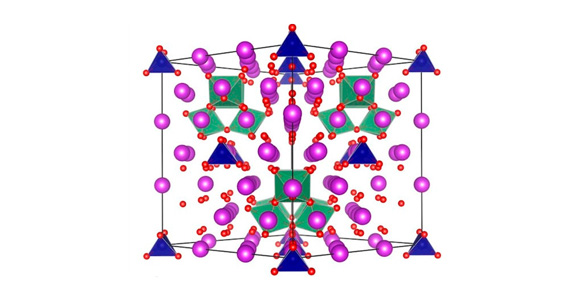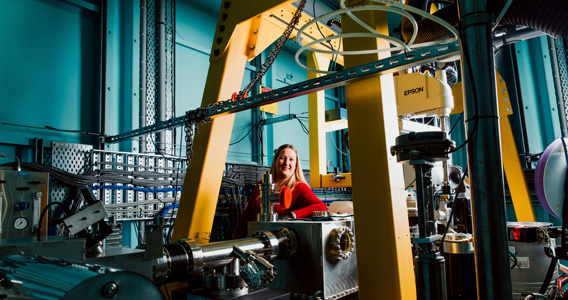Preparation for imaging and computing tomography experiments
Sample positioning
- For Computed Tomography (CT) the maximum sample size is defined by a combination of the detector field of view and the beam size. Your sample must be no wider than the detector field of view for artefact free CT reconstruction. Consult the detector table below to determine the maximum field of view for a given image pixel size.
- The CT apparatus includes either a standard goniometer mount (10 mm blind hole) or Huber translation stages for sample positioning. Users should discuss with the beamline staff to prepare an adapter plate or similar sample mounting system that is compatible with one of these positioning systems. Specifications are available from Anton Maksimenko on anton.maksimenko@synchrotron.org.au.
Detector availability
|
Detector name and type |
Field of view (mm) |
Pixelation |
Image pixel size |
Maximum frames per second |
Likely use |
Availablilty |
|
Amethyst Scint-X DXI-11000 |
36.2 x 24.1 |
4024 x 2680 |
9 μm |
3 |
Medium resolution imaging at higher energies |
Available |
|
2012 x 1340 |
18 μm |
6 |
||||
|
Ruby Single pco.edge sensor, lens coupled scintillator |
Min: 15.3 x 12.9 |
2560 x 2160 |
6 μm |
50 |
Medium resolution imaging and CT at fast frame rates |
Available |
|
Max: 141 x 119 |
2560 x 2160 |
55 μm |
50 |
|||
|
Amber Photonic Science Dual VHR |
100.14 x 33.48
|
8769 x 2923 |
11.4 μm |
1.2 |
Medium resolution, large area imaging |
No longer available |
|
2192 x 730 |
45.6 μm |
19 |
||||
|
Opal Teledyne Dalsa Argus Pan |
Current: 220 x 6.9 |
8160 x 256 |
27 μm |
7.8 |
Wide, medium resolution, for high energy imaging. |
Available |
|
Future: 440 x 6.9 |
16320 x 256 |
27 μm |
7.8 |
|||
|
Quartz Hamamatsu C9252DK-14 flat panel
|
Min: 243.2 x 10 |
2432 x 100 |
100 μm |
146 |
Therapy sample positioning and very fast frame imaging and CT
|
Available |
|
Max: 243.2 x 123.2 |
1216 x 616 |
200 μm |
30 |
|||
|
Diamond Optique Peter x-ray microscope |
Min: 1.66 x 1.40 mm Max: 20.48 x 17.28 mm |
2560 x 2160 2560 x 2160 |
0.64 μm 8 μm |
50 |
Fine resolution imaging and CT | Available |
Imaging and fast computed tomography (CT) of small objects in hutch 2B
Beam specifications
| Energy range | 20-60 keV |
| Maximum vertical beam size | 4 mm at 20 keV |
| Maximum vertical beam size | 3 mm at 60 keV |
Note: As of 2014, round 3 the Diamond Detector is only available on request. Please contact Anton Maksimenko or Chris Hall to discuss usage.
Imaging and computed tomography of large objects in hutch 3B
Beam specifications
| Energy range | 20-60 keV |
| Maximum beam size (H × V) | 120 mm × 40 mm |
Experiment considerations
Energy selection/settings
- Currently imaging experiments are only conducted in monochromatic beam mode.
- Users will be trained to change energy. Small (< 20 keV) changes take less than 5 minutes. Large energy changes (> 20 keV) take 10 minutes to allow for setting and settling time.
- Please ensure you list all energies required in your proposal.
Acquisition time
- Typical data acquisition time is dependent upon the sample, the detector, and the energy being used.
- A rough guide is that a single image from a mouse torso would be acquired in <300 milliseconds for modest (<50 micron) pixel sizes. For more information, contact Chris Hall.
- Typical CT data acquisition time – the time required to collect 180° rotation of sample, at 1500 projections will be ultimately depend upon energy, sample composition and detector resolution; consequently, times to collect one CT set will vary between 10-60 min. For more information, contact Anton Maksimenko (anton.maksimenko@synchrotron.org.au).
Sample stages and ancillaries
- The CT apparatus provides for sample mounting via:
- a standard goniometer mount (10mm hole)
- Huber translation stages
- Large base plate with hole pattern for custom designed sample holders
- Users should prepare a sample holder in advance of their experiment that is compatible with one of these positioning systems, in consultation with IMBL staff.
- A sketch of the base plate and Huber translation stage is provided here.
- 3D translation of samples will be provided.
- +/- 50 mm lateral and vertical translation, perpendicular to the X-ray beam
- +/- 2.5 m in direction of the beam
- Maximum weight of sample 10 kg.
- Remote monitoring of animal health via high resolution web camera will be available.











